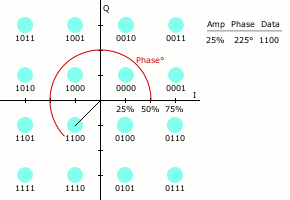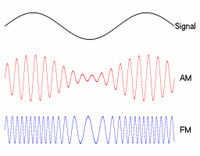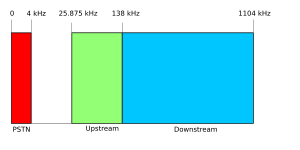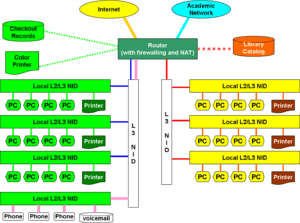Computer network facts for kids
A computer network is like a team of computers and other devices that are connected together. They work together to share things like files and printers, or to let people communicate with each other. Think of it as a digital highway where information travels!
In a network, each connected device is called a node. A node can be a computer, a printer, or anything else that can send or receive data. To make a network work, you often need special devices like hubs and switches. If you want to connect different kinds of networks, you use a router. Networks that use cables are usually faster than wireless ones.
A Local Area Network (LAN) connects computers that are close to each other, like in a home, school, or office. It's easier to set up a LAN than to connect networks across long distances. When networks are spread out over a large area, they are called a Wide Area Network (WAN). The biggest WAN of all is the Internet!
Computers can be part of many networks at once. Also, smaller networks can be part of bigger ones. For example, a small business might have its own LAN, which is then connected to the larger company's main network. This connection might also let them access the Internet. A shop, for instance, could use its network to show products on its website or to send customer orders to the shipping department.
Networks need the right hardware to work. This can be wired (using cables) or wireless (using radio waves). For a simple LAN, you just need computers and cables. But for larger networks or WANs, you'll need extra devices like a bridge, gateway, or router to link everything up.
Every network also needs a set of rules, called a communication protocol, to make sure devices understand each other. Most computers today, whether they run Microsoft Windows, Linux, or Apple Macintosh (which used to use Appletalk but now uses TCP/IP), use a protocol called TCP/IP.
Contents
How Networks Work: The Layer Cake Model
Trying to understand how a whole network works as one big thing can be tricky. So, experts split it into smaller, easier-to-manage parts called layers. The most common way to think about this is using the Open Systems Interconnection (OSI) model, created by the ISO.
Think of it like building a layered cake:
- Each layer has a specific job.
- A layer uses the services of the layer below it.
- It also provides services to the layer above it.
- When two devices communicate, each layer on one device talks only to the same layer on the other device.
The OSI Model: Seven Layers of Communication
The OSI model has seven layers, each with a different role in sending data. It's used all over the world to understand how networks talk to each other.
| Data Unit | Layer | What it Does |
| Data | Application | Helps applications (like web browsers) use the network. |
| Presentation | Translates, encrypts, and compresses data. | |
| Session | Manages connections between applications. | |
| Segments | Transport | Ensures data gets from one end to the other reliably. |
| Packets (datagrams) | Network | Finds the best path for data across different networks. |
| Frame | Data link | Manages data transfer between devices on the same network. |
| Bit | Physical | Handles the actual electrical signals and cables. |
Layer 1: The Physical Connection


This is the lowest layer, dealing with the actual wires, cables, and radio waves. It defines how data is sent as electrical signals or light pulses. It also covers how signals are changed (modulated) to travel over distances.
Baseband Transmission
Baseband is when digital data (like 1s and 0s) are sent directly. It's very fast and reliable over short distances, but the signal can weaken quickly. This is often used in LANs.
- UTP cable: Can go up to 100 meters at 100 Mbit/s speed without needing a signal boost.
- Optical fiber: Can go up to 1 kilometer at 100 Mbit/s speed without a signal boost.
A common technology using baseband is Ethernet.
Modulated Transmission
In telecommunications, modulation is like putting a message inside another signal that can travel far. For example, your voice (a message) can be put into a radio wave to travel to a radio. The device that does this is called a modulator. The device that takes the message back out is a demodulator. Today, these two are often combined into one device called a Modem (modulator-demodulator). This is used for WANs, WLANs, and WWANs. Common technologies include WI-FI, ADSL, and cable TV connections (CATV).
Layer 2: Data Link Control
This layer makes sure data is transferred correctly between devices on the same network. It also helps detect and fix any errors that might happen at the physical layer.
Layer 3: Network Routing
The network layer is like a traffic cop for data. It figures out the best path for data to travel from a source computer on one network to a destination computer on a different network. It uses IP addresses to do this.
IP Address
An Internet Protocol address (IP address) is a unique number given to every device (like a computer or printer) connected to a network that uses the Internet Protocol. Think of it as a device's street address on the internet. There are two main versions:
- IPv4 uses 32-bit addresses, which means there are about 4.3 billion possible unique addresses.
* Example: IP-192.168.0.1 with a network mask-255.255.255.0 means the network is 192.168.0.0, and the device is 192.168.0.1.
- IPv6 uses much longer 128-bit addresses, allowing for a huge number of unique addresses – enough for the future! Full IPv6 support is still being rolled out.
Layer 4: Transporting Data Reliably
This layer makes sure data is transferred smoothly and reliably between the two end users. It provides services to the layers above it. Two common protocols at this layer are TCP and UDP.
- TCP (Transmission Control Protocol) is like a careful delivery service. It makes sure all data arrives in the correct order and that nothing is lost. TCP is used for things that need perfect data transfer, like e-mail, browsing the WWW, and file transfers.
- UDP (User Datagram Protocol) is like a quick postcard service. It sends data fast but doesn't guarantee that everything arrives or is in order. UDP is used when speed is more important than perfect reliability, like for stream videos, VOIP (internet calls), and online games.
Layers 5-7: Application Interaction
These top three layers (Session, Presentation, and Application) are often grouped together in simpler models. Their main job is to work directly with your applications, making sure they can connect to the network, encrypt data if needed, and set up special connections.
Important Networking Terms
Latency (Ping)
Latency measures how long it takes for a small piece of data (a "packet") to travel from your device to its destination and back. It's measured in milliseconds (ms). People often call it "ping" because the tool used to measure it is called ping.
- Immediate latency is the measurement at a specific moment. It changes constantly because of how networks send data in small packets. High latency can make applications freeze, which is called lag.
- Average latency is the average of many immediate latency measurements. It helps estimate how much temporary storage (a "buffer") an application needs to run smoothly, even with some latency.
Capacity (Bandwidth)

Capacity, also known as bandwidth, measures how much data a network can transfer each second. It's measured in bits per second (bps), or more commonly today, megabits per second (Mbps). Most of the time, modern internet connections have more than enough bandwidth.
- Uplink is the amount of bandwidth used for sending data from your device to a server (like uploading a video). For most home users, this is usually lower.
- Downlink is the amount of bandwidth used for receiving data from a server to your device (like streaming a movie). For most home users, this is usually higher.
Broadcast
A broadcast is a special message sent to all devices on a specific network, not just one. It's often used to automatically give IP addresses to devices using a DHCP server, or to help the network quickly find devices.
Images for kids
-
An ATM network interface in the form of an accessory card. Many network interfaces are built-in.
-
Partial map of the Internet, based on data from opte.org . Each line is drawn between two nodes, representing two IP addresses. The length of the lines shows the delay between those two nodes. This graph represents less than 30% of the Class C networks reachable.
See also
 In Spanish: Red de computadoras para niños
In Spanish: Red de computadoras para niños















